 Home
Gallery
Contact
Events & Projects
Projects: 2019 On
Film & TV
Archive & Links
Home
Gallery
Contact
Events & Projects
Projects: 2019 On
Film & TV
Archive & Links
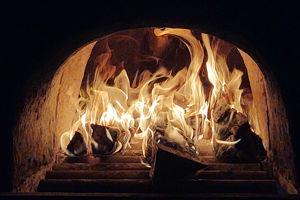
 Home
Gallery
Contact
Events & Projects
Projects: 2019 On
Film & TV
Archive & Links
Home
Gallery
Contact
Events & Projects
Projects: 2019 On
Film & TV
Archive & Links
|

|
2021 Furnace ('Phoenix') and Lehr at Quarley - Firepit Reconstruction
Projects: 2019 Onwards
Woodshed Build
The Woodpile
IFoG Furnace Removal
Firepit Reconstruction
Furnace Superstructure Build
Phoenix Firing One
Repairs after Firing One
Phoenix Firing Two
Repairs after Firing Two
|
Reconstructing the Firepit
Hover over the photos as more information is in the captions. The firepit had deteriorated dramatically due to overheating the Roman tile fragments, and there were large buildups of glass mixed with ash on the surface. We had to strip away all of the old structure except for a small portion at the cold end of the stokehole, and replace it with modern materials more suited for the extreme heat: sillimanite firebricks and castable refractory concrete. We took the pit down to the chalk, then built it up using a layer of builders sand over hardcore. We set the bricks on this, keeping the slope which was useful in the previous firings. Excavation Excavating the firepit revealed a few interesting points. The earthenware tiles had been seriously overheated, cracked and split, and a large spread of glass and ash had fused to them, making it possible to remove most of the remaining spread as one thick sheet. Steve had already removed some of this immediately following the disassembly of the IFoG Furnace, revealing the baked daub in plan and the glass/ash layer in section. Below this was a thin layer of soil, greyish in the centre and more orange towards the edges of the firepit. This was originally placed there to give a smooth surface on which to lay the tiles. Under this was a thick layer of hardcore, blackened in the centre by the anaerobic combustion of various pieces of wood, and brown-orange towards the edges. Two fragments of late 19th century bottle glass were found in the blackened area. They had not been altered by heat, leading us to conclude that the temperature had consistently been less than the softening point of the glass - around 560°C. The chalk itself had been disturbed and scraped horizontal by a digger bucket a few years previously, but it proved a stable surface on which to rebuild the firepit. |
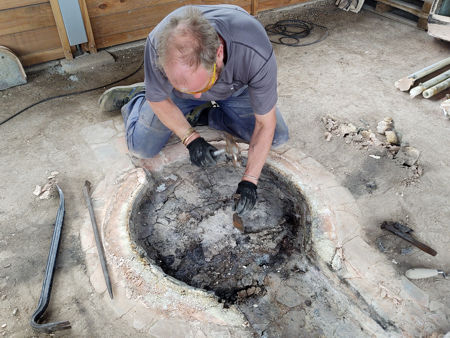
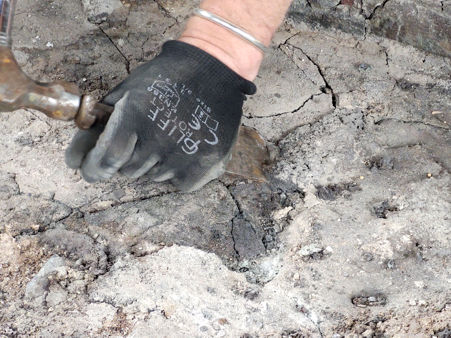
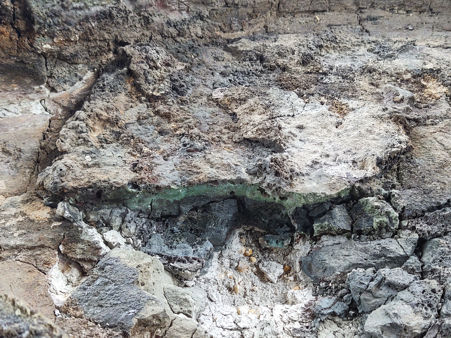
|
|
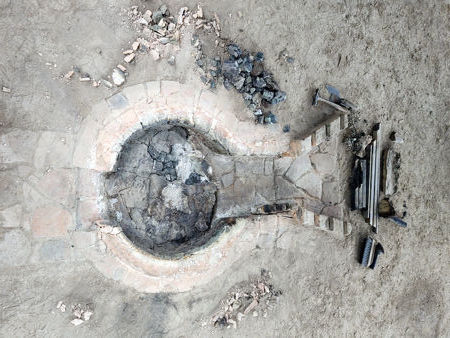
|
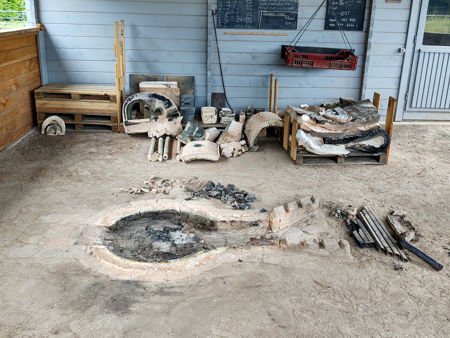
|
|
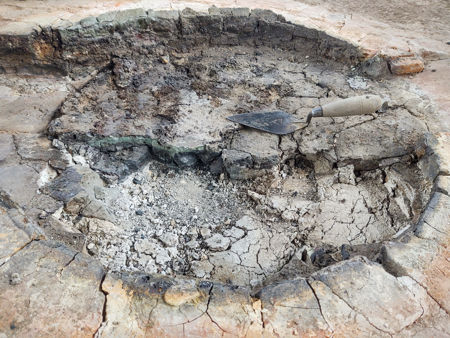
|
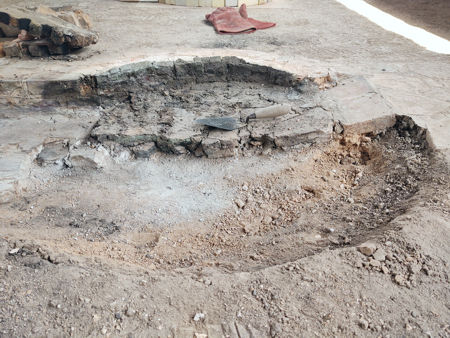
|
|
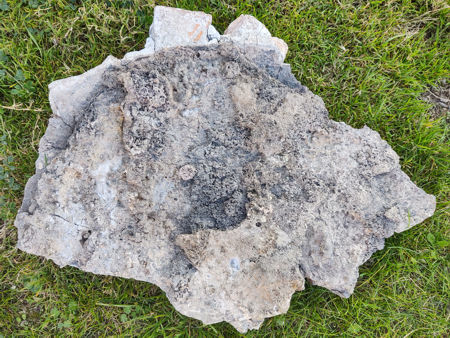
|

|
|
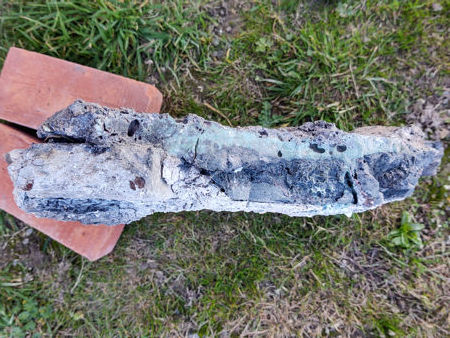
|
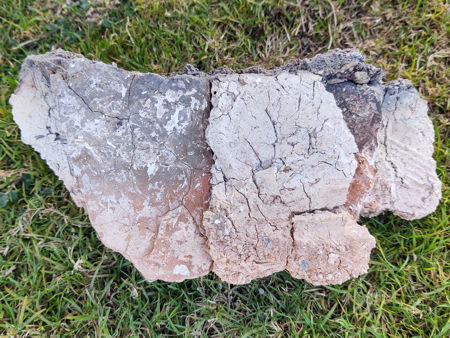
|
|
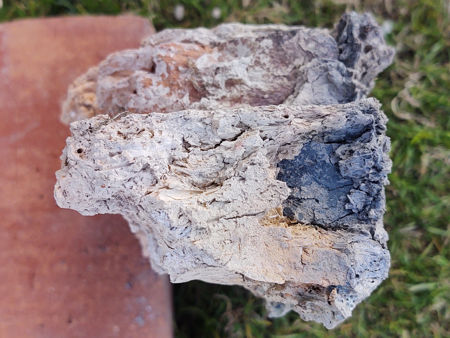
|

|
|
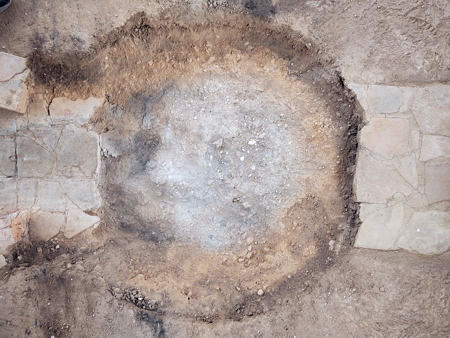
|
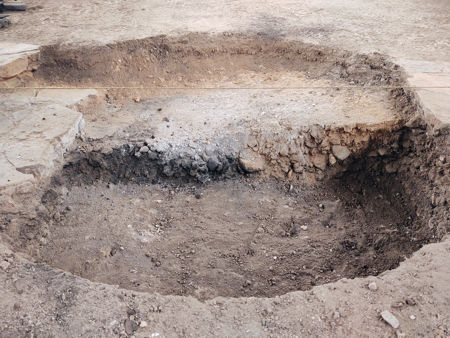
|
|
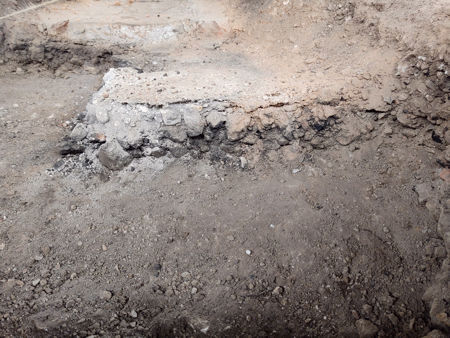
|
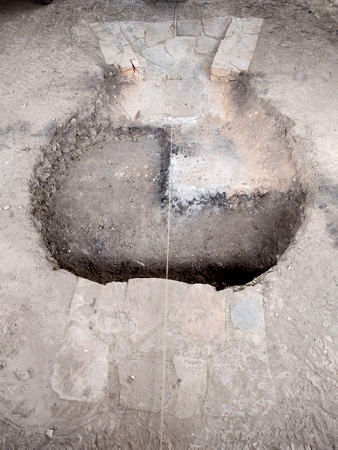
|
|
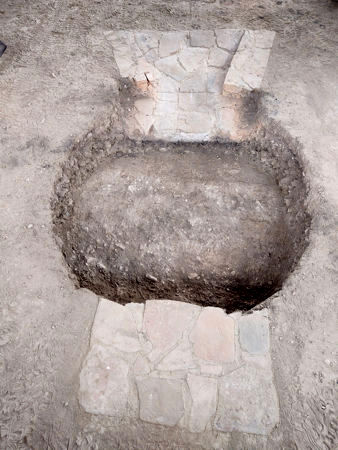
|
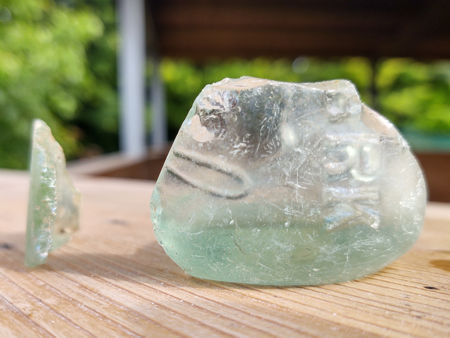
|
|
The Re-build
To build the firepit walls we used cut-down arch bricks set on a layer of builders sand over a layer of hardcore, all supported by a daub retaining wall. This wall was repositioned to be under the bricks to allow room for the floor of the firepit. In its turn, the sloping floor was built using hardcore and a layer of sand, on which were set the bricks. The gaps between the floor and the walls were filled with castable refractory concrete rated to withstand 1600°C. The concrete also held the walls in place. We made the lower stokehole 9" wide, the floor sloping to 5" deep, the inner, parallel-walled section 21" long and the outer, flaring section 9" long, flaring to 18" wide. We lined it with sillimanite bricks, supporting them at the back with sand and Roman tile fragments held in place with daub, and underneath with castable concrete in what were to be the hot areas and ordinary sand/cement mortar in the cool areas. The upper stokehole is 13.5" wide, and the tunnel is x18" long and 9.5" high from the top of the bricks. The tunnel construction is described on this page. We made the grate under the tunnel from the ceramic fire bars which had previously been used as the pot support bars in the IFoG furnace, spacing them 1" apart with sillimanite brick offcuts. Three stainless steel bars from the previous grate made the outer grate. We spaced them 1.5" apart and set them into a short daub wall on each side as before. The grate was made so the fire bars would be easily removable, and was 5.5" above the stokehole floor to make raking out ash an easy task. It took us fourteen days to rebuild the firepit and lower stokehole. It should be a far more durable structure, and we expect it to last for several years and to withstand many repeat firings. |
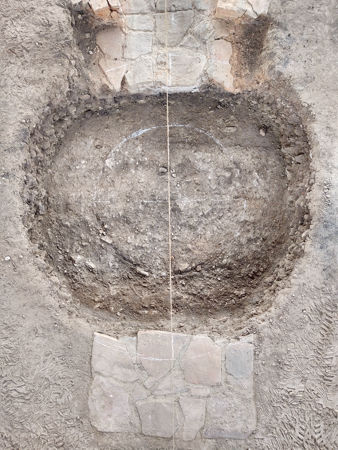
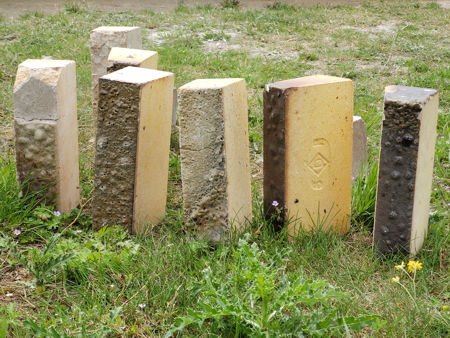
|
|
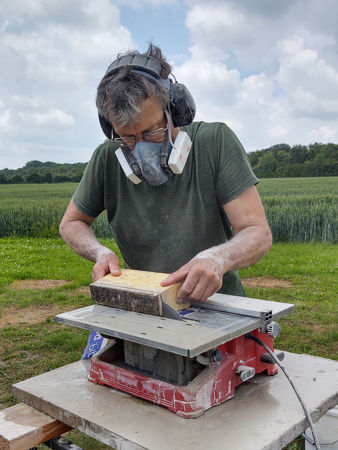
|
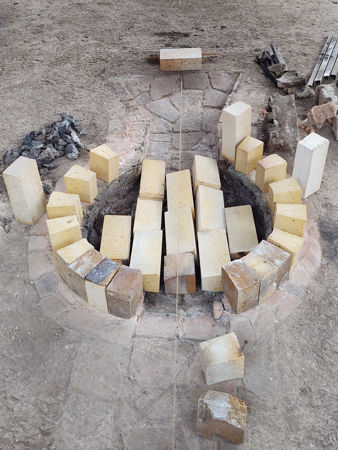
|
|
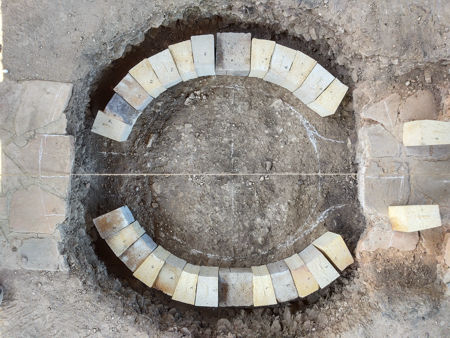
|
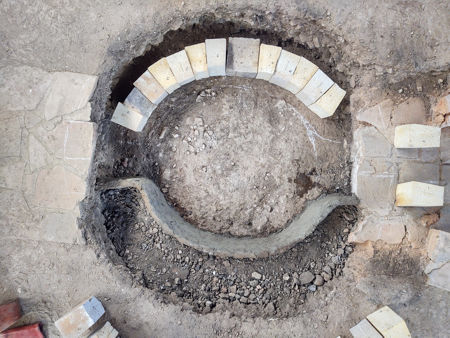
|
|
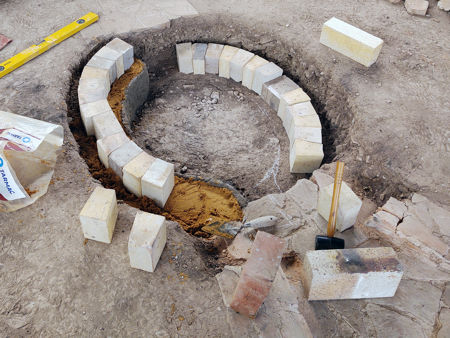
|
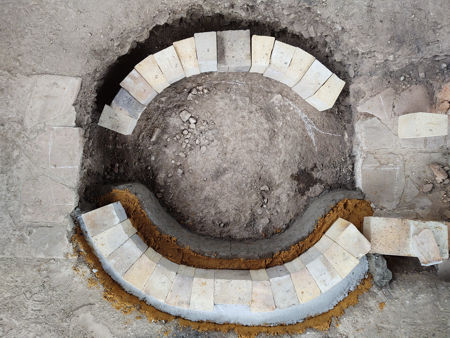
|
|
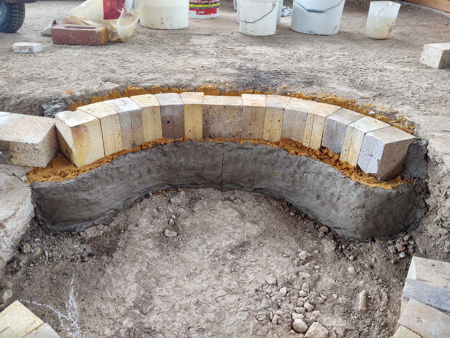
|
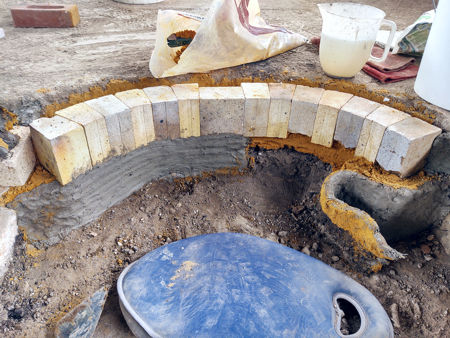
|
|
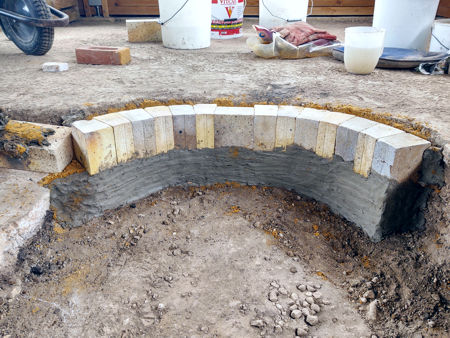
|
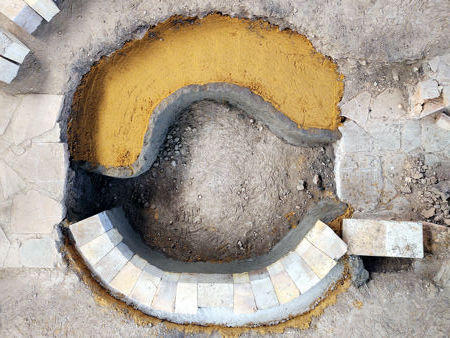
|
|
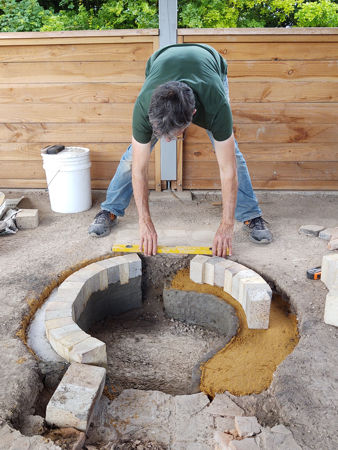
|
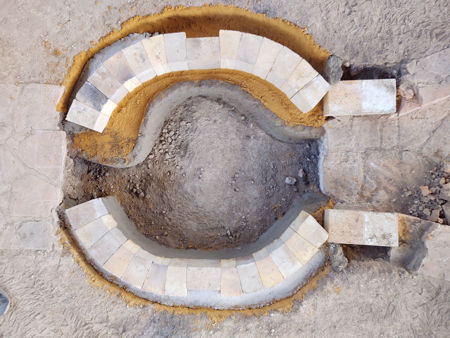
|
|
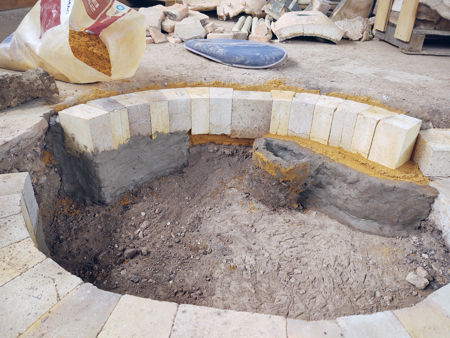
|
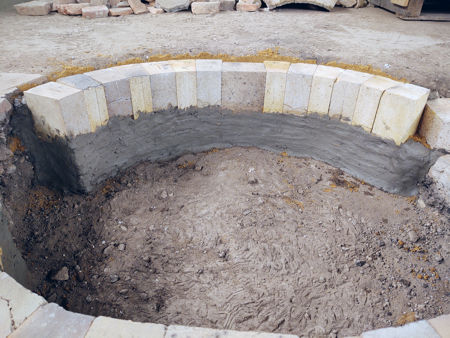
|
|
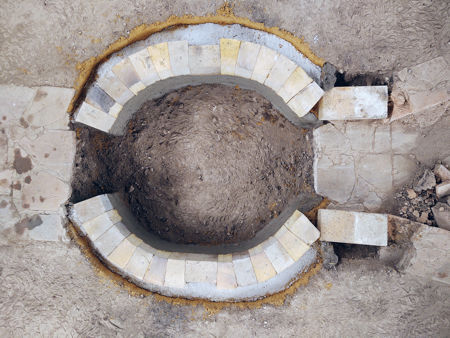
|
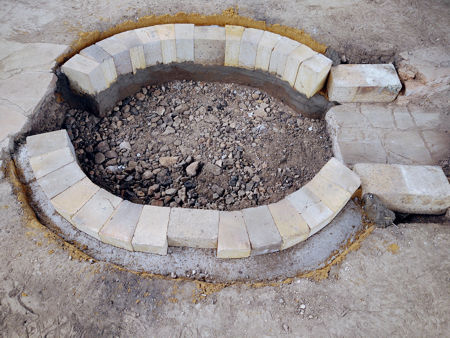
|
|
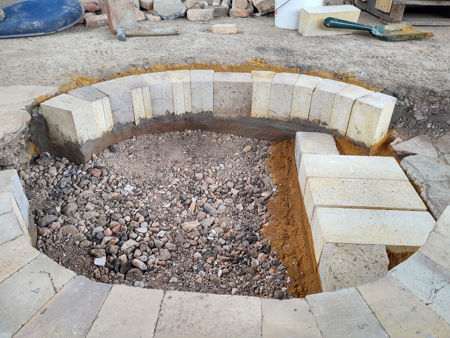
|
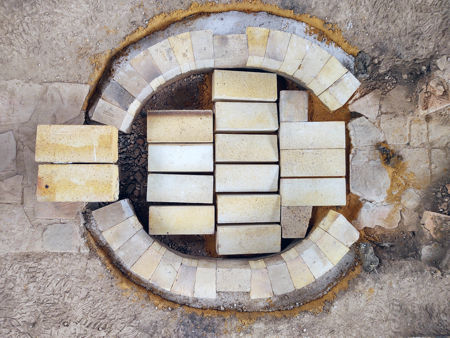
|
|
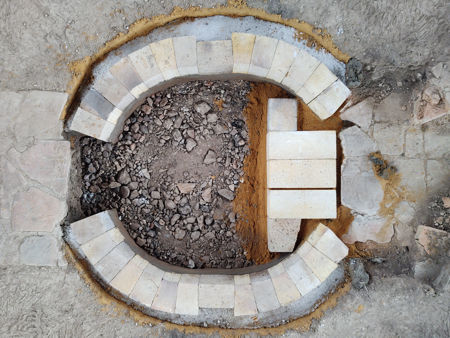
|
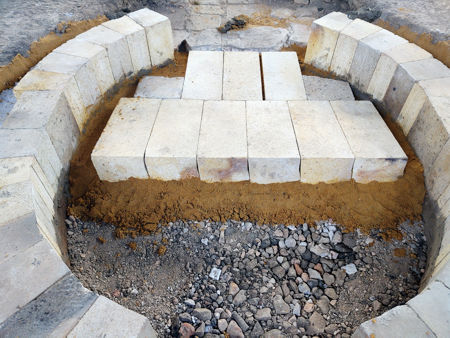
|
|
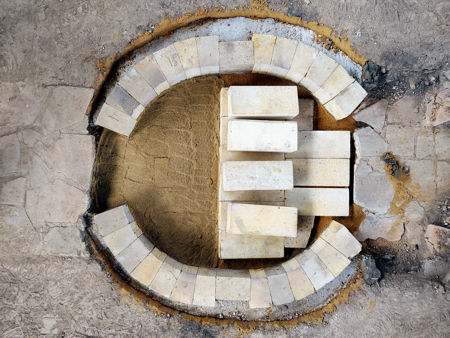
|
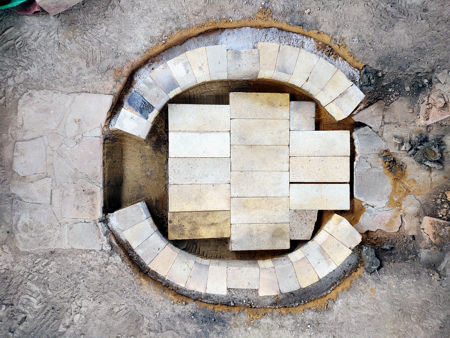
|
|
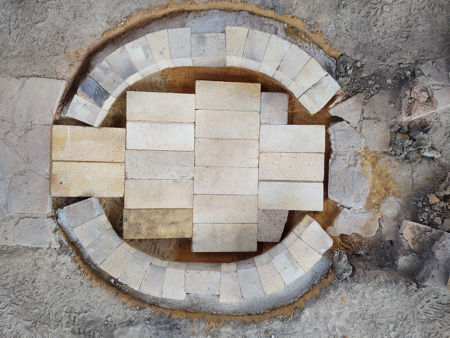
|
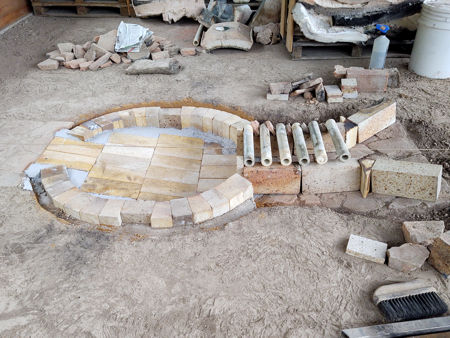
|
|
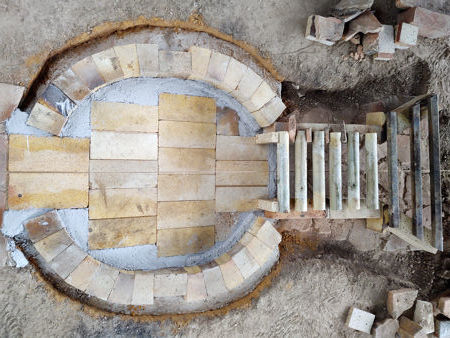
|
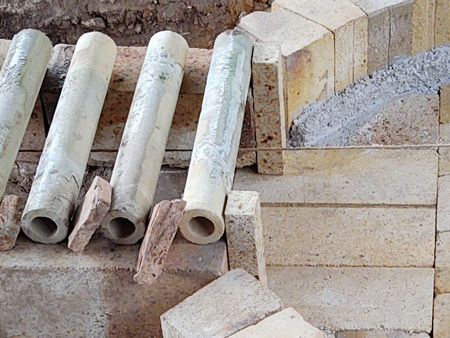
|
|
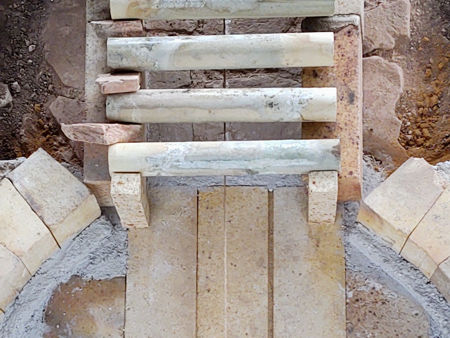
|
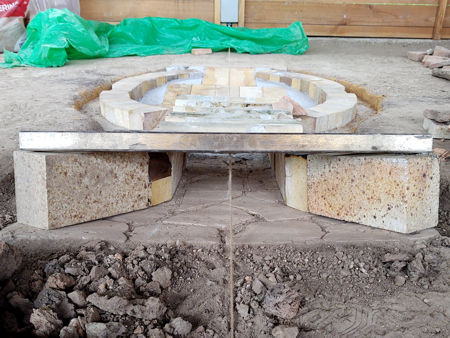
|
|
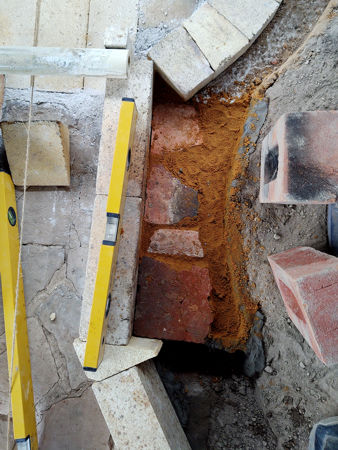
|
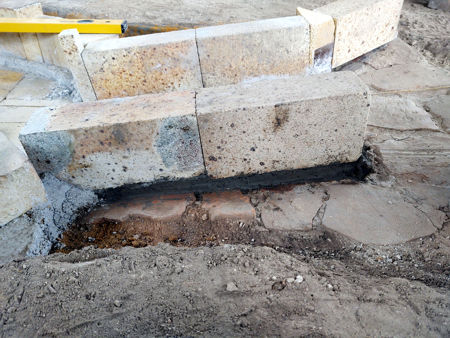
|
|
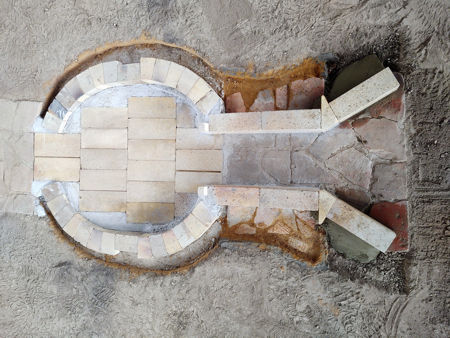
|
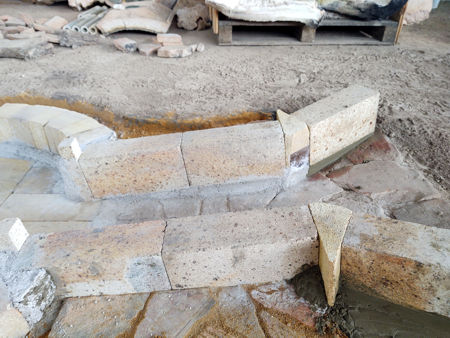
|
|
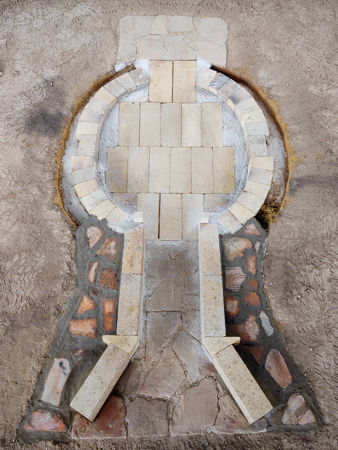
|
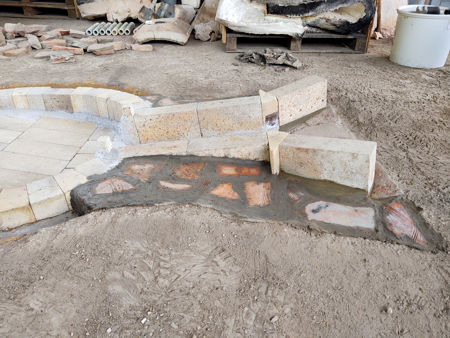
|
|
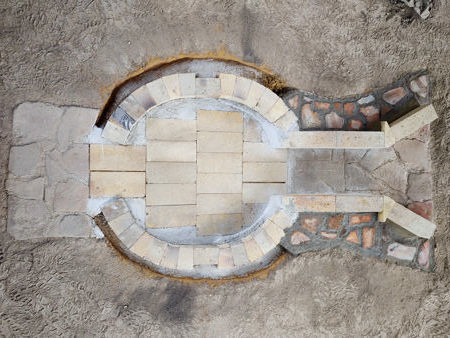
|
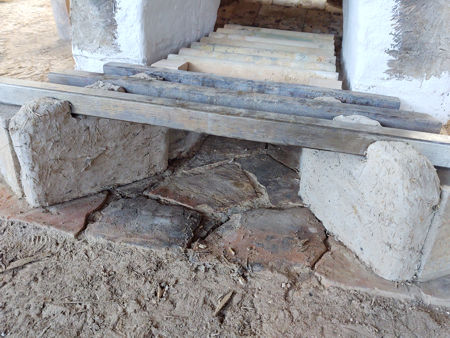
|
Home Gallery Contact Events & Projects Projects: 2019 Onwards Film & TV Archive & Links